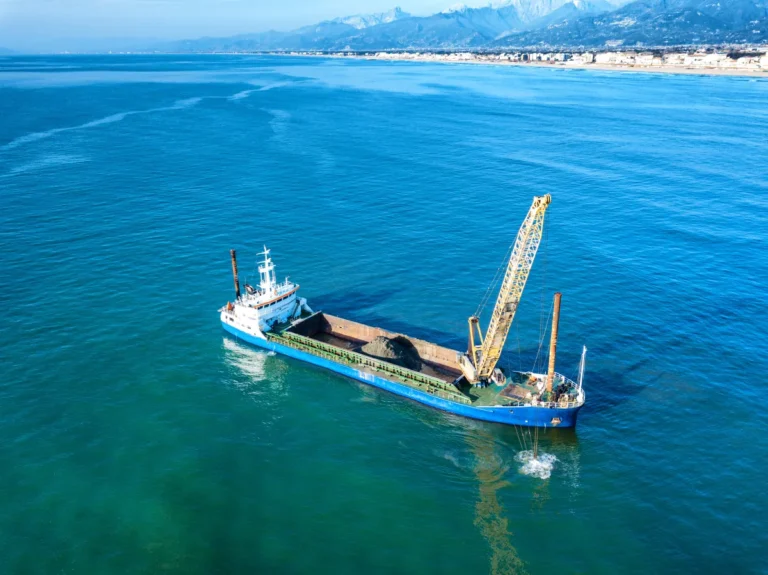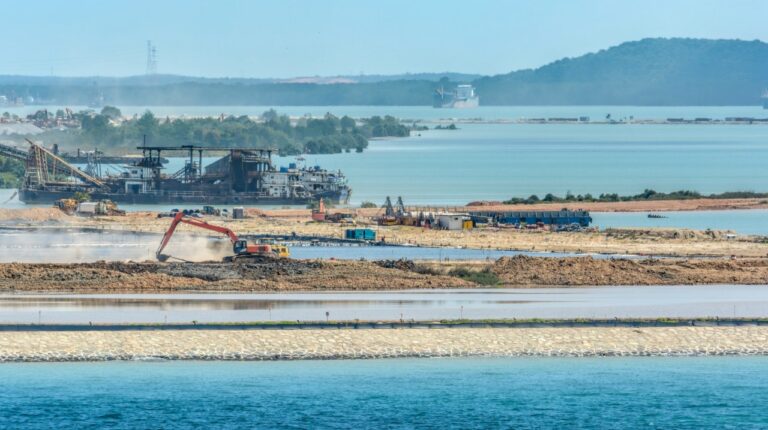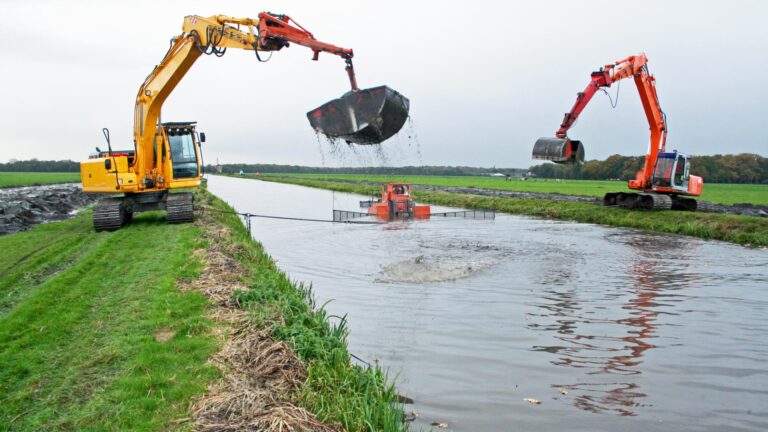Book Appointment Now
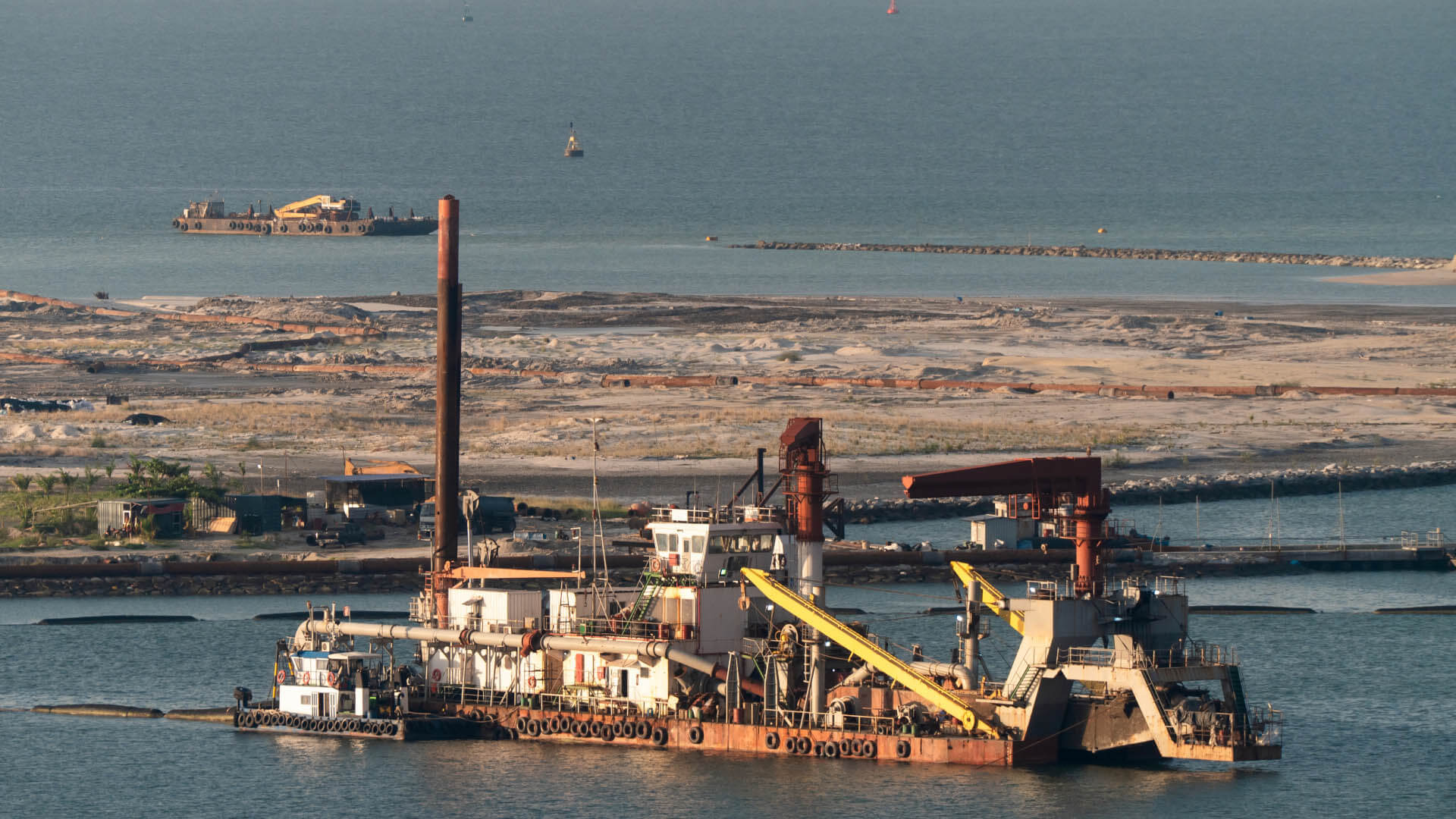
Choosing the Right Floating Dredge: Key Factors to Consider
Dredging plays a critical role in various industries, including mining, construction, and environmental restoration. It involves the removal of sediment, debris, and other materials from the bottom of bodies of water to maintain navigable channels, extract valuable minerals, and restore aquatic ecosystems. In mining, dredging is essential for recovering minerals and precious metals like gold from riverbeds and underwater deposits. In construction, dredging supports land reclamation and infrastructure development by clearing waterways and preparing underwater foundations. Environmental dredging helps remove pollutants and restore natural habitats, improving water quality and ecological balance.
Choosing the right floating dredge is crucial for maximizing efficiency and minimizing operational costs. A well-selected dredge will be capable of handling the specific material composition, water depth, and environmental conditions of the project. For instance, a floating gold dredge is designed to recover fine particles of gold from sediment, requiring specialized equipment to separate gold from other materials efficiently. Additionally, dredge pipe floats are essential for maintaining the stability and mobility of the dredge system, preventing pipeline sagging, and ensuring consistent material flow. Investing in the right floating dredge improves overall productivity, reduces wear on components, and extends the lifespan of the equipment, ultimately lowering maintenance costs and enhancing long-term performance.
Types of Floating Dredges

Cutter Suction Dredge
A cutter suction dredge is one of the most versatile and widely used types of floating dredge. It is ideal for large-scale projects such as mining, harbor maintenance, and land reclamation. This type of dredge uses a rotating cutter head to break up sediment and debris before suctioning the material through a pipeline for transport. The cutter head allows the dredge to handle a wide range of materials, including sand, clay, gravel, and compacted soil. Cutter suction dredges are highly efficient for deep dredging operations and large-scale sediment removal, making them a popular choice for coastal and inland projects. To maintain proper positioning and stability, dredge pipe floats are often attached to the pipeline, ensuring consistent material flow and preventing sagging.
Jet Suction Dredge
Jet suction dredges are commonly used in lightweight operations and gold mining, where precision and sediment separation are critical. A jet suction dredge uses high-pressure water jets to loosen sediment and create a slurry, which is then pumped to the surface. This method is particularly effective for mining fine materials like gold, making a floating gold dredge an ideal choice for riverbed and streambed mining. Jet suction dredges are smaller and more maneuverable than cutter suction dredges, making them well-suited for shallow water and hard-to-reach areas. The ability to adjust water pressure allows for more controlled sediment removal, reducing the impact on surrounding environments and improving recovery rates. A floating gold dredge equipped with advanced separation systems can maximize gold recovery while minimizing sediment disturbance.
Auger Dredge
Auger dredges are designed for precision and minimal environmental impact, making them ideal for environmental dredging and sediment removal. Instead of using a cutter head or jet system, an auger dredge features a rotating screw-like mechanism that grinds and lifts sediment with minimal turbidity. This reduces the spread of disturbed sediment and helps protect aquatic ecosystems. Auger dredges are often used in contaminated sediment removal, lake restoration, and wetland rehabilitation projects. As a type of floating dredge, auger dredges benefit from their ability to operate in shallow water and confined spaces. Combining auger dredges with dredge pipe floats helps stabilize the pipeline and improve dredging accuracy, ensuring a more controlled and efficient operation. This combination increases overall efficiency and reduces operational strain on the equipment.
Key Factors to Consider When Choosing a Floating Dredge
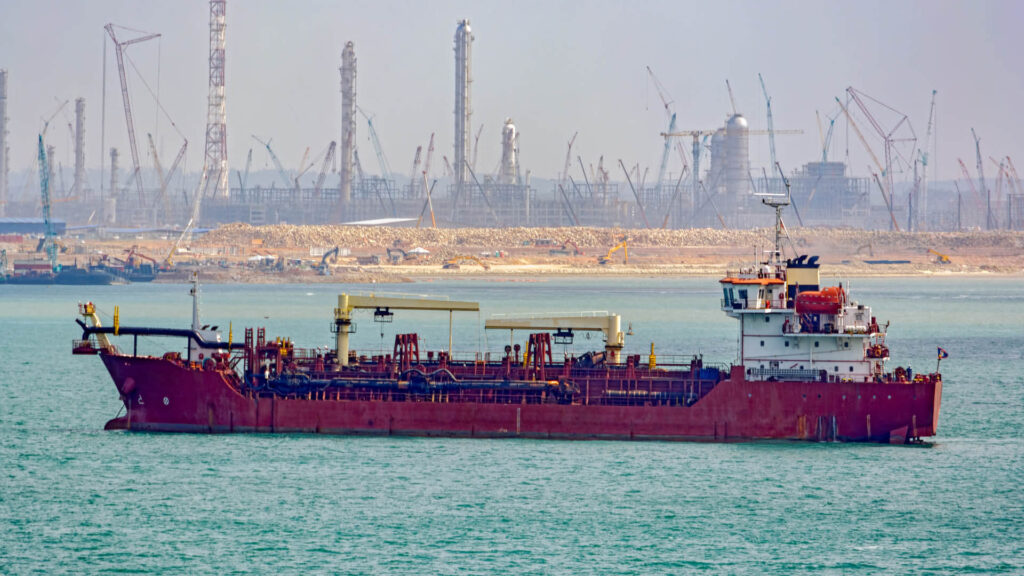
Dredging Depth and Capacity
One of the most important factors to consider when selecting a floating dredge is the dredging depth and material capacity. The size and capacity of the dredge should match the specific needs of the project to ensure optimal efficiency and production rates. A larger dredge with higher capacity is better suited for deepwater mining and large-scale sediment removal, while smaller models are more effective for shallow water and confined spaces. The dredging depth directly impacts the efficiency of material transport and pump performance. A well-balanced floating dredge ensures that sediment is removed efficiently without overloading the system or causing operational strain.
Type of Material to be Dredged
The type of material being dredged also plays a critical role in equipment selection. Sand, mud, gravel, and gold-bearing sediment each require different dredging approaches. A floating gold dredge is specifically designed to recover fine gold particles from sediment, using specialized sluice boxes and separation systems. Gold-bearing sediment often contains a mixture of heavy and fine materials, requiring precise flow control and sediment separation. In contrast, mud and clay are more cohesive, demanding greater suction power and larger pump sizes. Gravel and coarse sand may require wear-resistant components and stronger cutter heads to withstand the abrasive nature of the material. Choosing the right floating dredge for the material type ensures higher recovery rates and reduced equipment wear.
Pump Power and Efficiency
Selecting the right pump size and type is essential for maximizing the efficiency of a floating dredge. Pump power directly affects the dredge’s ability to transport sediment over long distances and through various pipeline configurations. A high-efficiency pump reduces energy consumption and lowers operational costs. Floating gold dredge models often require high-powered pumps to handle fine material recovery without losing suction efficiency. Proper pump selection helps improve flow rates and reduces downtime caused by blockages or mechanical strain.
Mobility and Deployment
The ease of deploying and repositioning a dredge can significantly affect project efficiency. Self-propelled dredges offer greater mobility and flexibility, while anchored dredges provide more stability for deep dredging projects. Dredge pipe floats are essential for maintaining pipeline stability and preventing sagging, which can reduce suction efficiency. High-quality dredge pipe floats improve maneuverability by ensuring that pipelines stay buoyant and aligned, even in challenging water conditions. A properly balanced and mobile floating dredge increases operational control and reduces the risk of mechanical failures.
Importance of Dredge Pipe Floats
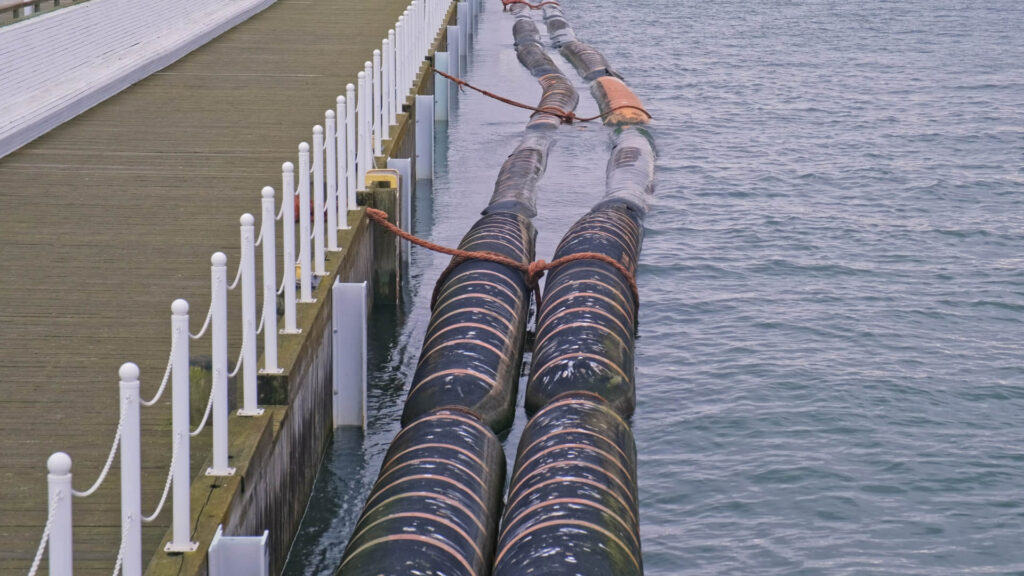
Stability and Buoyancy
Dredge pipe floats play a crucial role in ensuring the stability and efficiency of a floating dredge. When a dredge system is in operation, the pipeline used to transport sediment and water from the dredging site to the processing area needs to remain properly aligned and buoyant. Dredge pipe floats are designed to support the weight of the pipeline, preventing sagging and ensuring consistent flow rates. Sagging or misaligned pipes can cause blockages, reduced suction power, and increased wear on the pump and other components. Properly installed floats keep the pipeline above water, reducing drag and maintaining the correct positioning of the floating dredge. This is especially important for projects in rivers and lakes, where currents and waves can cause movement and misalignment.
Pipe floats also enhance the maneuverability of the dredge. A well-supported pipeline allows for smoother repositioning and more precise control over the dredging process. This is particularly beneficial when using a floating gold dredge, which requires fine-tuned adjustments to maximize recovery of gold-bearing sediment. With stable and properly aligned pipe floats, operators can maintain steady suction pressure and avoid disruptions caused by pipeline instability.
Material and Durability
The material used in dredge pipe floats directly affects their performance and lifespan. High-quality pipe floats are made from UV-resistant and corrosion-resistant materials, such as high-density polyethylene (HDPE) or coated metal. UV resistance prevents material degradation from prolonged sun exposure, while corrosion resistance protects against damage from saltwater and mineral-rich environments. A durable pipe float extends the operational lifespan of the floating dredge by reducing the need for frequent repairs and replacements.
Durability is even more critical for a floating gold dredge because the equipment often operates in harsh and abrasive conditions where sediment and debris can cause wear. High-impact resistance and reinforced float construction ensure that the floats maintain their shape and buoyancy even under heavy loads. Investing in high-quality dredge pipe floats enhances overall dredging efficiency by reducing downtime and maintenance costs while ensuring that the floating dredge maintains proper alignment and stability throughout the project.
Special Considerations for a Floating Gold Dredge
Fine Material Recovery
Recovering fine gold particles from sediment requires a specialized approach, which is why the design of a floating gold dredge is critical to mining success. Unlike standard dredging operations that focus on bulk material removal, gold dredging involves separating fine gold particles from sand, mud, and gravel. The sluice box design plays a key role in this process. A properly designed sluice box will create a controlled flow of water and sediment, allowing the heavier gold particles to settle while lighter materials are washed away. The riffles and matting in the sluice box trap gold effectively when the flow rate is balanced.
A floating dredge used for gold recovery must have an adjustable water flow rate to maximize efficiency. Too much flow can wash away fine gold particles, while too little flow can cause the sediment to settle prematurely, reducing recovery rates. High-performance pumps and well-positioned dredge pipe floats help regulate flow and maintain consistent pressure, improving the separation process. Fine material recovery also depends on the ability to adjust the sluice box angle and flow rate based on sediment composition, ensuring that even the smallest gold particles are collected.
Environmental Impact
If not carefully managed, gold dredging can have a significant environmental impact. A floating gold dredge stirs up sediment, which can increase turbidity and affect aquatic ecosystems. High turbidity can reduce oxygen levels in the water and disrupt fish habitats. To minimize environmental disruption, operators must monitor dredging intensity and water flow rates, ensuring that sediment is released gradually and evenly.
Regulatory compliance is also critical when operating a floating dredge for gold mining. Many regions have strict guidelines on sediment discharge, water quality, and ecosystem protection. Operators must follow these guidelines to avoid fines and project shutdowns. Using eco-friendly dredge pipe floats and biodegradable lubricants can help minimize environmental impact. Additionally, regular inspection and maintenance of the floating gold dredge, including its sluice box and floatation system, ensures that the equipment operates efficiently while minimizing damage to the surrounding environment. By balancing operational efficiency with environmental responsibility, operators can maintain high recovery rates and sustainable mining practices.
Maintenance and Longevity of Floating Dredges
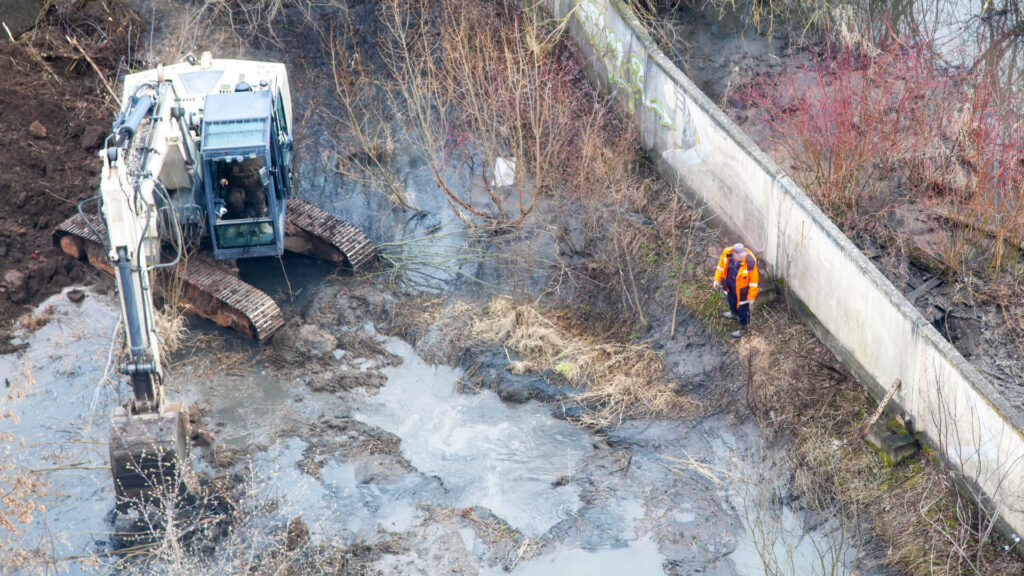
Regular Inspection and Cleaning
Regular inspection and cleaning are essential for maintaining a floating dredge’s efficiency and longevity. Over time, sediment, sand, and debris can accumulate in the pump, hoses, and suction lines, reducing overall efficiency and increasing the risk of blockages. Inspecting the pump for signs of wear, such as reduced suction power or increased vibration, helps identify issues before they escalate into costly repairs. Hoses and pipelines should also be checked for cracks or leaks, which can compromise the dredging process.
A key part of maintaining a floating dredge is keeping the system clean and free of sediment buildup. If sediment hardens within the pump or suction lines, it can lead to reduced flow rates and increased wear on internal components. Regularly flushing the system with clean water after each operation helps prevent sediment accumulation and extends the lifespan of the equipment. For a floating gold dredge, cleaning the sluice box and separation system is especially important to maintain high recovery rates and prevent fine gold loss due to clogged riffles or mats.
Corrosion and Rust Protection
Corrosion and rust are major challenges for any floating dredge, especially those operating in saltwater or mineral-rich environments. Saltwater dredging accelerates the corrosion process, weakening metal components and increasing the risk of mechanical failure. Applying protective coatings, such as epoxy or zinc-based primers, helps shield metal parts from water exposure and chemical damage.
Cathodic protection is another effective method for preventing corrosion. This technique involves using a sacrificial anode to attract corrosive elements away from the dredge’s metal components. Floating gold dredge operators often use this method to protect critical components, such as the pump and sluice box, from premature wear. Regularly checking for rust and treating affected areas with anti-corrosion products helps prevent structural damage and extends the lifespan of the equipment.
Float Maintenance
Dredge pipe floats are essential for maintaining the balance and efficiency of a floating dredge. Over time, pipe floats can become damaged due to impact, UV exposure, or material fatigue. Inspecting dredge pipe floats for cracks, leaks, and deformation is critical for maintaining buoyancy and preventing misalignment of the pipeline. Damaged floats should be repaired or replaced promptly to avoid uneven weight distribution and reduced suction efficiency. Ensuring proper float alignment helps maintain the balance of the floating dredge, reducing mechanical strain and improving overall performance. Well-maintained dredge pipe floats contribute to smoother operation and more consistent dredging results.
Conclusion
Choosing the right floating dredge is essential for maximizing efficiency and ensuring successful project outcomes. Factors such as dredging depth, material composition, and project size play a critical role in selecting the right type of dredge. Cutter suction dredges are ideal for large-scale sediment removal, while jet suction dredges are better suited for lightweight operations and gold recovery. Auger dredges provide precise sediment removal with minimal environmental impact.
For gold mining, a floating gold dredge with a well-designed sluice box and adjustable flow rate improves fine gold recovery and operational efficiency. High-quality dredge pipe floats are also essential for maintaining pipeline stability and preventing sagging, which helps ensure consistent suction and flow rates. Investing in the right equipment and following proper maintenance practices reduces downtime, improves performance, and extends the lifespan of the dredge. Selecting the right floating dredge and components leads to more efficient and cost-effective dredging operations.


